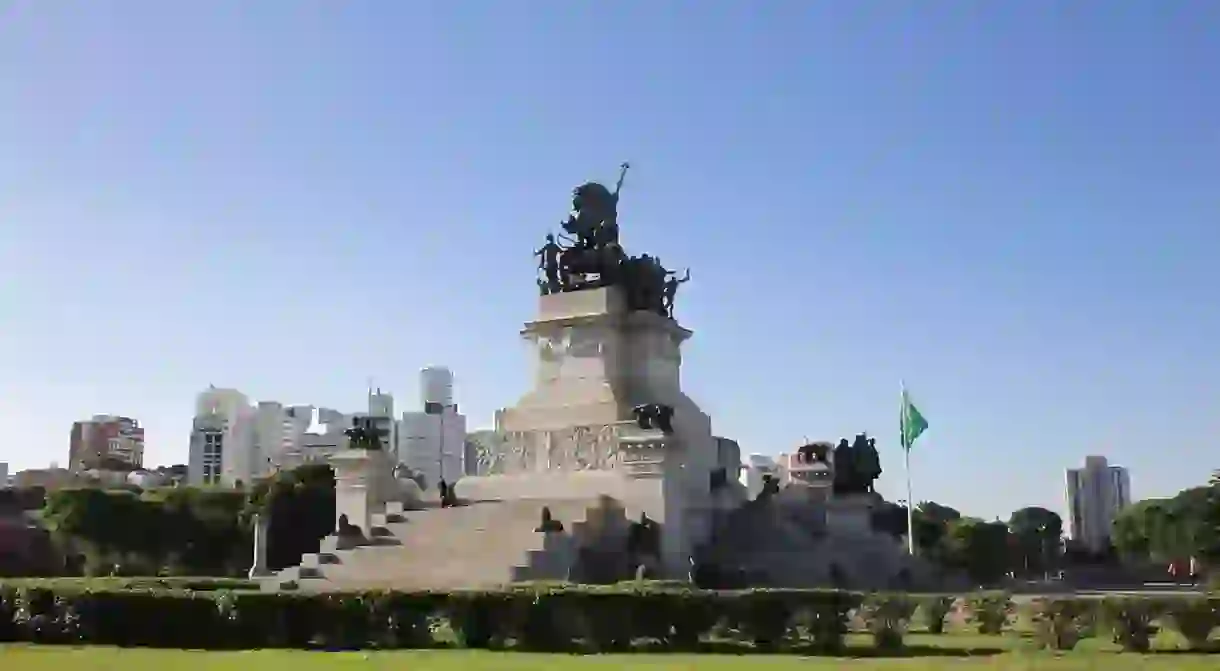History of the Monumento à Independência do Brasil in 60 Seconds

On the banks of the historic Riacho do Ipiranga, a small brook flowing into the Tamanduateí River in Sao Paulo, is the Monumento à Independência do Brasil, a grand granite-and-bronze structure commemorating Brazil’s independence from Portugal.
King of Portugal João VI returned to Europe after attempting to quell the Liberal Revolution of 1820 and appointed his son, Dom Pedro I, regent of Brazil. As dissatisfaction grew among the Brazilian people toward the Portuguese government, Pedro I sided with the locals; in 1822 on the banks of the Ipiranga, upon hearing that he had been ordered to return to Portugal, he declared Brazil free from Portugal’s rule, crying the famous words, “Brazilians—independence or death!”
In 1922, on the centenary of the so-called “Cry of Ipiranga,” Sao Paulo’s city government commissioned a monument on the site of the declaration, a project led by sculptor Ettore Ximenes and architect Manfredo Manfredi, both from Italy. In 1953, a crypt was built inside the monument to host the remains of Pedro I, Empress Leopoldina (his wife), and Princess Maria Amélia (his daughter).
The monument’s main feature is its bronze high-relief panel depicting the famous Pedro Américo painting Independência ou Morte (Independence or Death) while also representing important moments and figures leading up to independence, such as the Inconfidência Mineira, the Pernambuco revolt, José Bonifácio de Andrada e Silva, and Hipólito da Costa.
Today, the Independence Monument is part of the Parque da Independência, a large park with a forest and beautiful French gardens, as well as the Museu do Ipiranga, a museum with a huge collection of artwork and artifacts from the Brazilian Empire. The museum is currently closed for renovation and is due to reopen in 2022, just in time for the 200th anniversary of Brazil’s independence.













